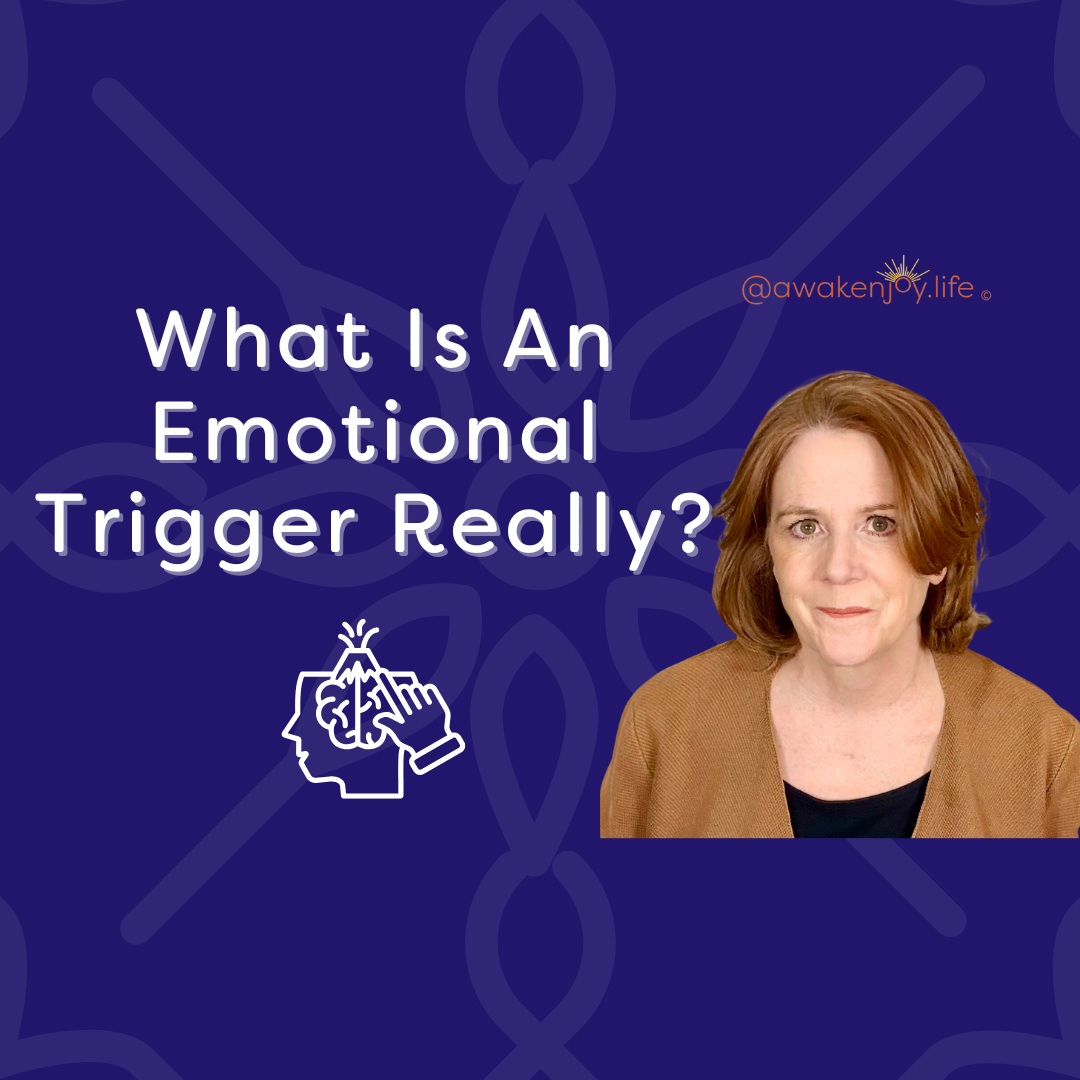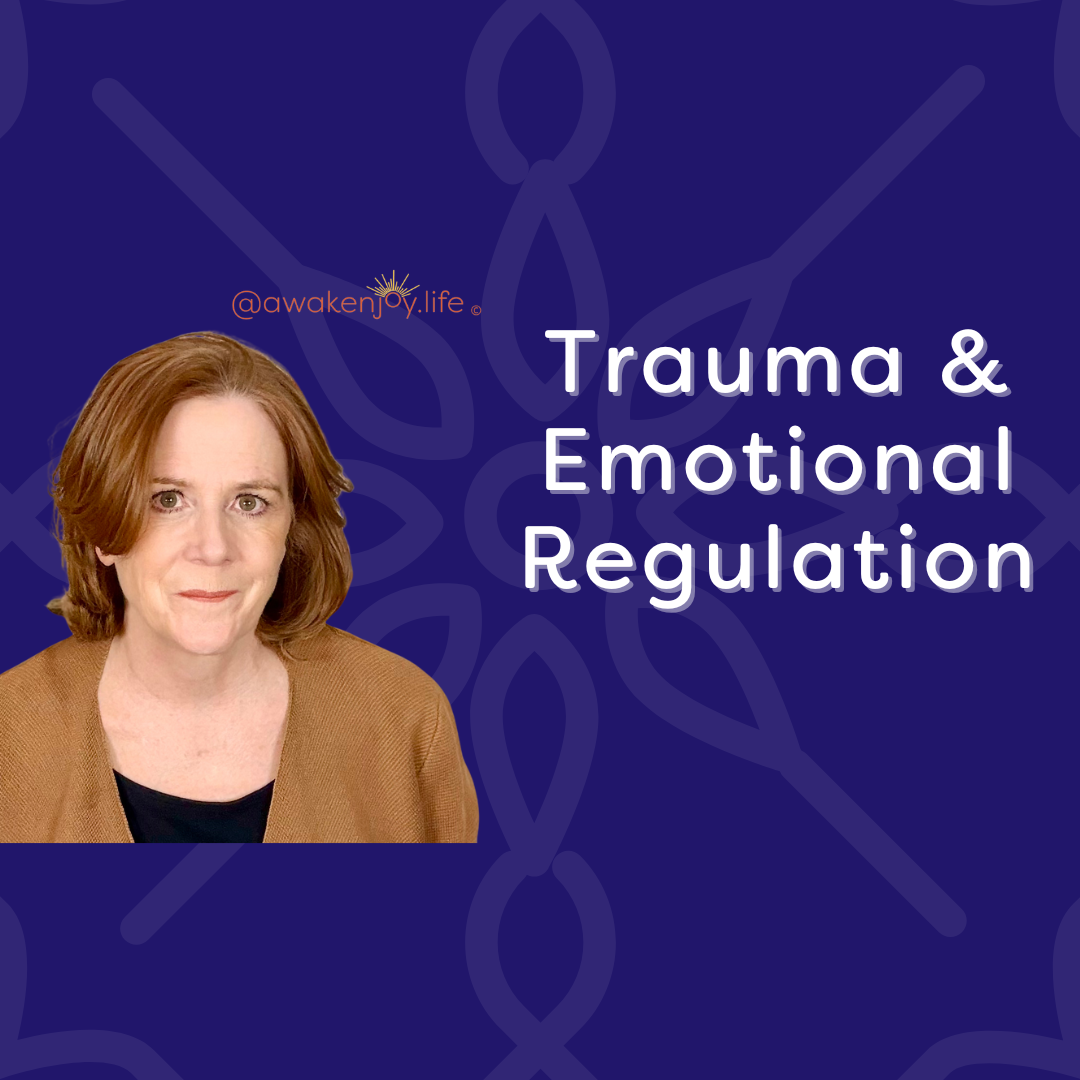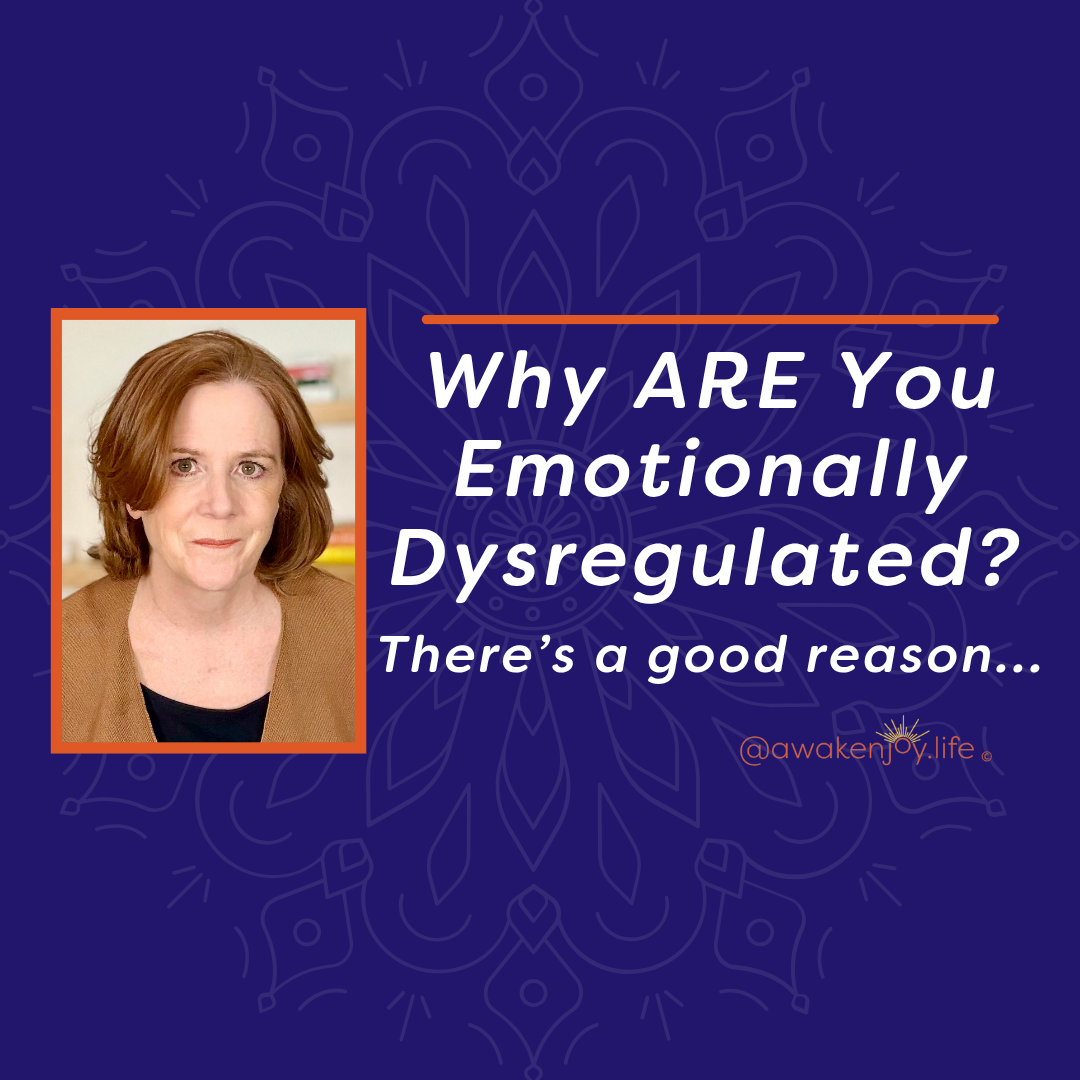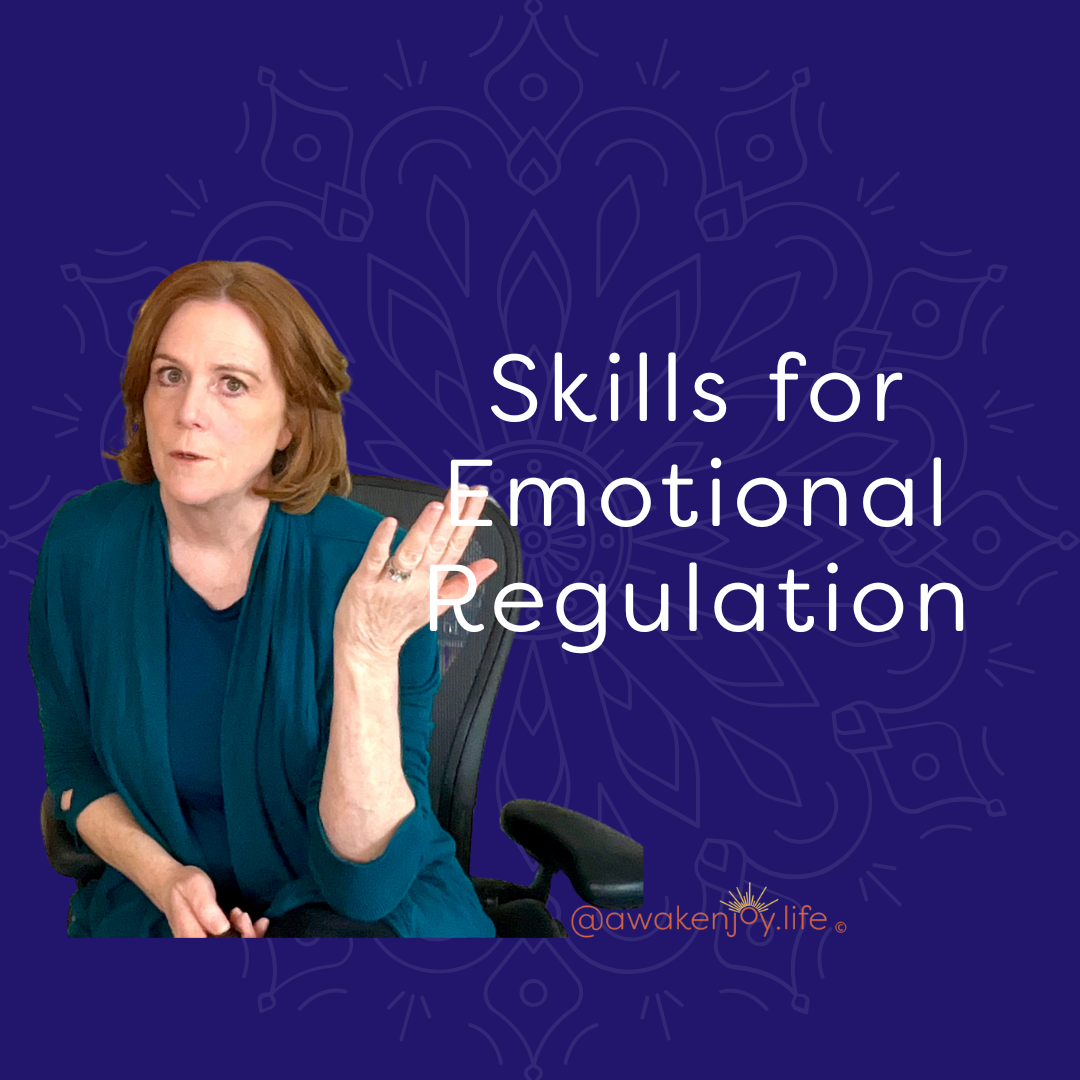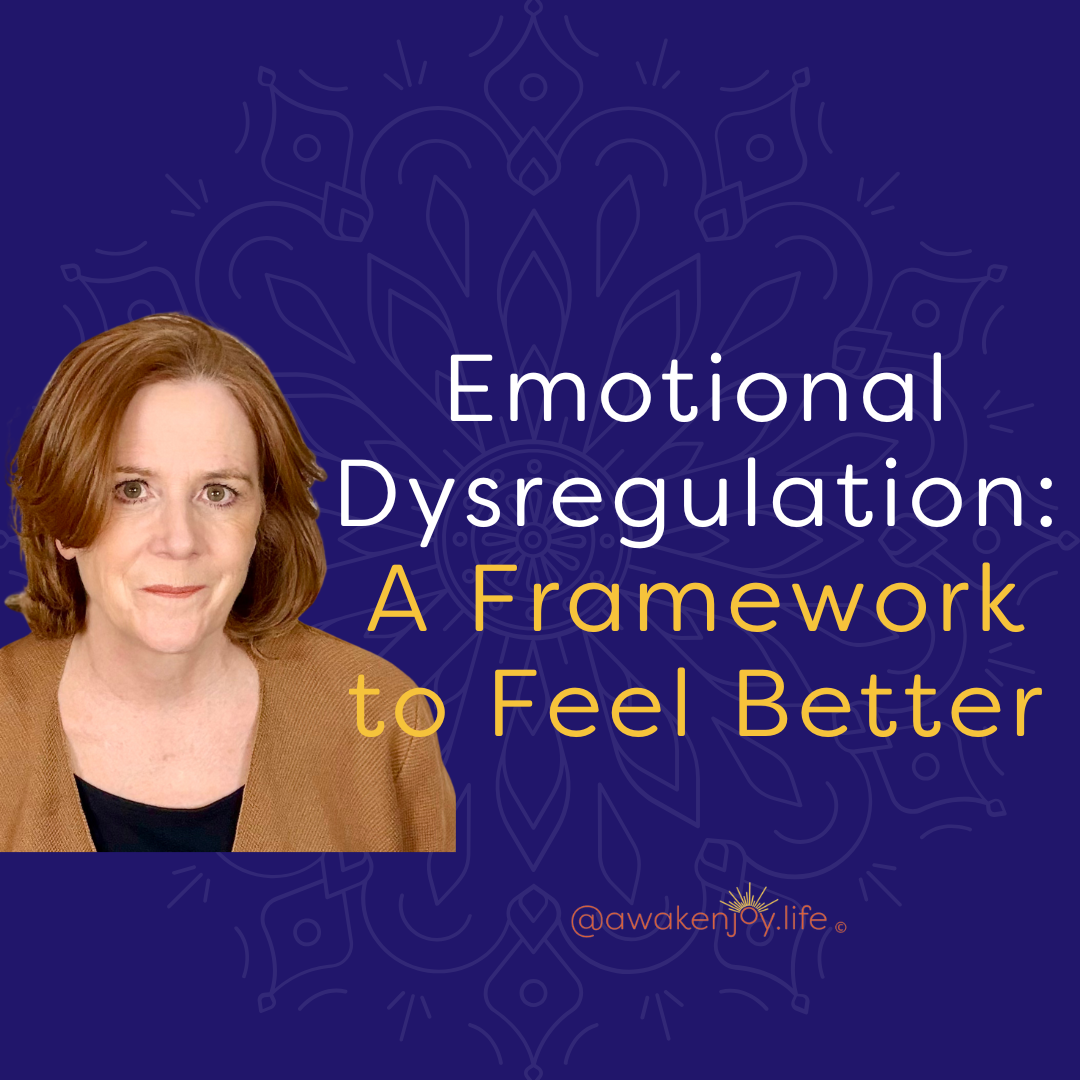Setting Boundaries with Family: What to Expect
Barbara Heffernan • July 11, 2025

Does setting boundaries with your family send SHOCKWAVES through the system?
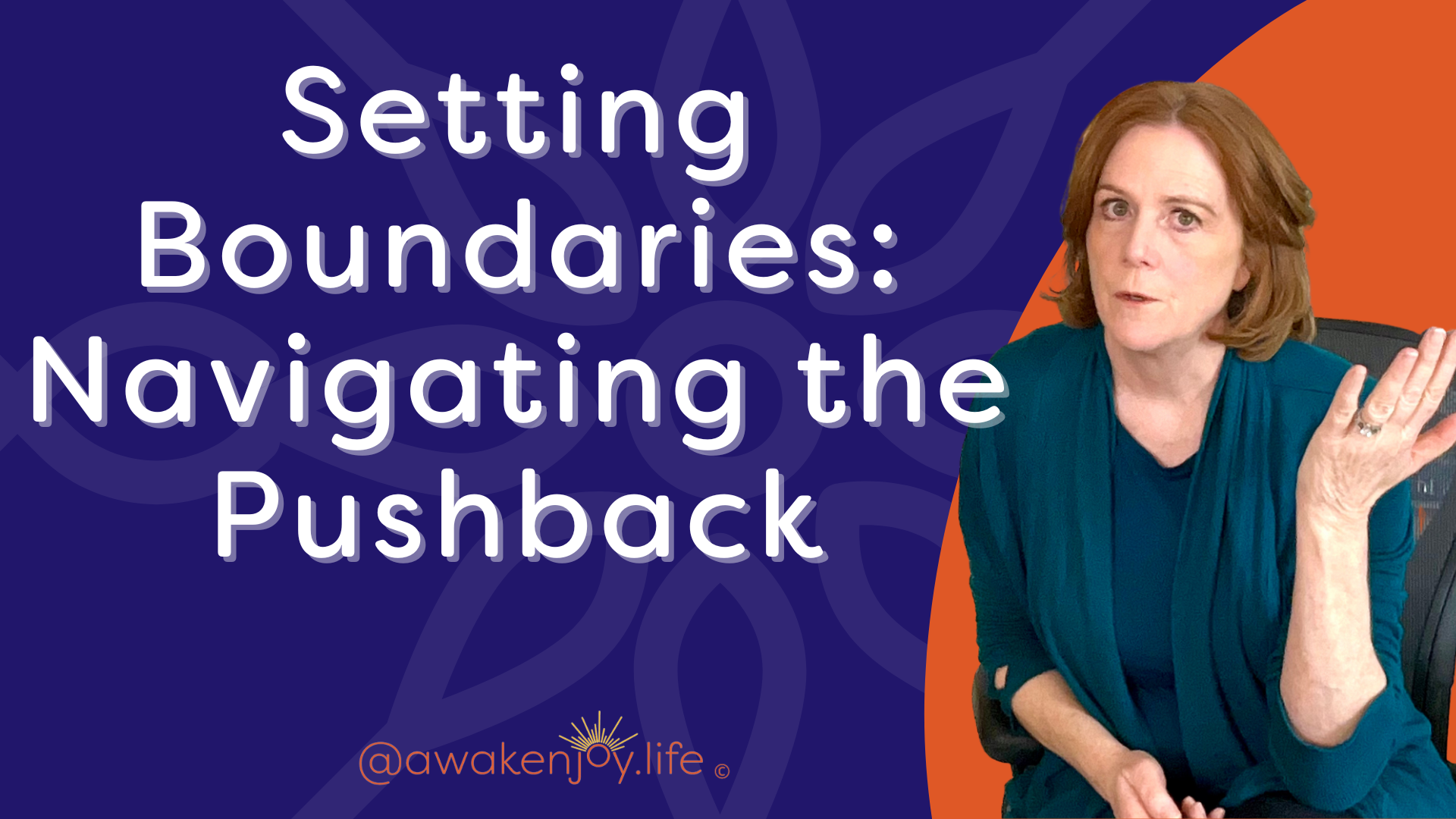
You've been doing healing work for months or maybe even years. You finally feel like you have some things figured out and you're ready to start setting boundaries with family members so you can have healthier relationships and feel better about yourself. You take a deep breath and begin to set those boundaries... and it doesn't quite go as expected.
In fact, sometimes starting to set boundaries with family sends shockwaves through the entire system. This reality prompted a thoughtful question from one of my viewers who expressed so eloquently the problem that so many of us face. She's looking for advice on how to deal with the consequences that come when we begin changing those old patterns of people-pleasing, caretaking, and being the parentified child.
In her comment she states that "the truth is, these changes have very real consequences within the family system, and this change can bring real depression and anxiety with it."
I completely agree with her assessment, and I thought it might be helpful to share my thoughts on what you can expect when you begin setting new boundaries AND how you can best navigate this challenging but necessary process.
Understanding the Family System: The "Calder Mobile" Effect
When you begin setting boundaries for the first time, you can expect pushback, lack of understanding, and lack of awareness—even from well-meaning family members.
When we change our behavior, it impacts the entire family system. One of the best analogies for a family system is a Calder mobile—you know, those delicate hanging sculptures with balanced shapes.
Everything in a family system is balanced based on the behaviors of the individuals in that family and what they expect from each other. Each person has habitual patterns, and each person expects you to maintain your habitual patterns.
If you picture your family as a Calder mobile, imagine what happens when one of the hanging shapes changes or is removed. The whole structure leans to one side and becomes crooked.
Family members will spend considerable energy trying to get you back into your old position to keep everything comfortable for them.
Family members will spend considerable energy trying to get you back into your old position to keep everything comfortable for them.
If you approach this with the understanding that it is a systemic issue, rather than viewing it as evil or a personal attack, you're more likely to move forward in a confident, calm manner. You'll know to expect pushback from the system, yet you can still move forward with your necessary changes.
What to Expect: From Pushback to Extreme Reactions
Even in reasonably healthy families, you'll probably encounter these three responses:
- **Pushback**
- **Lack of understanding**
- **Lack of awareness**
In a much more enmeshed family system—where everyone's emotions are confused, responsibilities are unclear, and roles might be reversed (which happens when you grew up parentified)—setting boundaries can trigger more intense reactions.
In these systems, you might be the emotional caretaker of the family. You may not even know which emotions are your own, though you've been working to figure that out. You might habitually take on other people's emotions or be expected to manage certain family members' emotional states.
In very enmeshed family systems, setting boundaries can be viewed as:
- Disrespectful to the family
- Disloyal to family traditions and expectations
- Selfish (you'll likely hear this word repeatedly)
In more extreme cases, you might experience:
- Ostracism from family events or communication
- Belittling and put-downs about your new boundaries
- Guilt trips about standing up for your own needs
- Shaming
In really entrenched and enmeshed family systems—particularly if there are members with personality disorders—the reaction to your boundary-setting might be extreme and sustained.
Another crucial thing to understand is that change takes time. If you're getting significant pushback, whatever consequences you decide to implement will probably need to be exercised multiple times. Systems take time to adjust, so patience with the process is essential.
How to Navigate Boundary-Setting Successfully
I'm going to walk you through four key areas that will set you up for success: 1) inner strength and conviction, 2) preparation of boundaries and consequences, 3) communication strategies, and 4) building a support system.
1. Inner Strength and Conviction
I know this might sound daunting, but you've already been doing healing work. There's no finish line you need to cross first — just the more secure you can become in knowing it's okay for you to have needs and set boundaries, the better this process will go.
The key components to this section are:
**Knowing You Deserve Boundaries**: The deeper your conviction that you deserve to set boundaries, the smoother the entire process becomes.
**Emotional Regulation**: This is crucial. The more emotionally regulated you can stay while interacting with difficult family members, the easier it will be to stick to your boundaries. Really working on your emotional regulation tools before you need them is key.
**Disconnecting from Others' Opinions**: When we set boundaries, people generally aren't happy about it. If you're completely invested in convincing them that this boundary is a good idea, you're likely to fail. You'll exhaust yourself trying to convince them this is reasonable, but you actually don't need to do that. Not requiring others to buy into your view is essential.
This concept of regulating your own emotions is actually a core piece of the boundary program I offer—an eight-week program that looks at how to heal your negative core beliefs (which might be along the lines of "my needs don't matter" or "my needs aren't as important as someone else's") that need to be addressed upfront. The program also focuses extensively on emotional regulation tools that are best if practiced and utilized before you put yourself into potentially explosive situations. You can find more information about the boundary program by clicking this link.
2. Preparation of Boundaries and Consequences
**Understanding Yourself**
Spend time really understanding your own needs, wants, values, and beliefs. This foundation will help you prepare the boundaries you want to set. Also identify the specific behaviors, actions, activities, and conversations that make you uncomfortable.
**Understanding Your Triggers**
Understand your personal triggers. Why do these things bother you? How can you manage your emotions so they don't cause you to explode, run away, freeze, or fight? If you can manage your triggers and understand that they exist for good reasons, this awareness will help you be very specific about your boundary-setting.
**Realistic Expectations**
Think through realistic expectations for change in your different relationships. Some family members might be able to adapt, change, and respect your boundaries. Others might not be able or willing to do so.
Having realistic expectations doesn't mean you're giving them a pass or making excuses for them. It simply means you're being realistic so you can set appropriate consequences. It doesn't mean you have to put up with behaviors that are upsetting and harmful to you.
If you have a particularly toxic family member who you don't think will have the ability or willingness to change, anticipating this upfront helps you in two ways:
1. **It helps you set consequences you control** (withdrawing yourself from situations, limiting contact, etc.)
2. **It helps you manage your emotions in the moment** rather than hoping for change that won't come
**Boundaries vs. Threats**
During this preparation phase, remember that consequences are not threats, and threats are not consequences. Threatening cutoff or threatening to prevent someone from seeing your children isn't a consequence—it's a threat. Threats are often given during emotional dysregulation moments and frequently aren't followed through with.
**Preparing Responses**
Come up with responses to the pushback you expect to receive. If your family system typically uses guilt trips, rehearse a few calm responses. Often, the most effective responses simply restate your position calmly without going down the rabbit hole of whatever you're being accused of.
Be prepared to reiterate your boundaries and redirect family members multiple times. Anticipating that this will take time helps with that crucial emotional regulation.
3. How to Communicate Your Boundaries
Keep three words in mind when setting boundaries: **clear, kind, and firm**.
**Be Clear**: State your boundary directly and specifically
**Say it Kindly**: Avoid attacking or blaming language
**Say it Firmly**: Firm means assertive, not aggressive
Communicating with the "Healthy-Enough" Family Members
Express your boundary from the perspective of your feelings: "I feel X when this happens, and I'd like to ask that you do A, B, C instead." This approach avoids blaming and isn't attacking, which helps people respond more positively.
Communicating with the Toxic Family Members
If you have a really toxic family member, expressing your feelings may actually be used against you. You might be put down for feeling what you're feeling, or it might give them fuel to attack you. In these cases, simply state: "I no longer want to be yelled at. If that begins to happen, this is what I will do."
Any pushback ("You're such a baby," "You're being ridiculous," etc.) gets the same calm response: "I no longer want to be yelled at. If that begins to happen, this is what I'll do."
Additional Communication Skills
- **Learn to say no clearly and simply**
- **Value your own time and peace of mind**
- **Avoid family gossip and triangulation** ("He said," "She said," jockeying for position)
If you're trying to get out of an enmeshed family system, not engaging in behaviors that contribute to the enmeshment will be very helpful.
4. Building a Support System
This is really important because as you make these changes and bring them into your family system, the resulting shockwaves can make it hard to hold your ground without support.
Professional and Peer Support
- **Supportive therapist** who understands family dynamics
- **Supportive friends** who've been through similar experiences
- **Support groups** like Al-Anon (for friends and family of people with alcoholism) and other "anon" groups
- **Online communities** focused on family recovery and boundary-setting
Many problems in enmeshed systems include alcohol, drugs, or mental illness, so having a support system where people understand these family dynamics can be invaluable.
Self-Support
Use self-compassion throughout this process. Know that this won't be a straight line—you're going to set a boundary and then struggle to hold it at times. You're changing habitual patterns that have been in place for years or decades.
As you practice boundary-setting and experience the self-esteem that comes from holding reasonable boundaries, it becomes very reinforcing. Having compassion for yourself as you go through this process and giving yourself time to adjust is essential.
The Hopeful Reality: Boundaries Improve Relationships
I need to end with a hopeful message because having healthy boundaries actually improves relationships—even family relationships. Over time, the healthy (or healthy enough) members of your family will adapt and change. Hopefully, your relationships with them will strengthen to the point where your family becomes somewhat of a support system rather than just an anxiety-producing system.
That's the hope and intention of moving forward with boundary-setting. You can even share this vision with the healthier family members—that you're working toward stronger, more respectful relationships for everyone.
Moving Forward with Confidence
This is a complicated topic that requires ongoing attention and practice. Remember these key points:
- **You deserve self-respect and respect from others**
- **You deserve to take care of your own needs while being a contributing family member**
- **Doing both is possible**, though maybe not in the way your family is used to or wants
- **Things can change** with time, consistency, and the right approach
The family mobile will eventually find a new balance—one that includes space for your needs, your boundaries, and your well-being. It may look different from what everyone is used to, but it can be healthier for everyone involved.
Setting boundaries with family is one of the most challenging aspects of personal growth, but it's also one of the most rewarding. You're not just changing your own life—you're potentially creating a healthier legacy for future generations and modeling what healthy relationships can look like.
What questions do you have about setting boundaries with your family? Have you experienced some of these dynamics? I'd love to hear about your experiences and any specific situations you'd like me to address in future content.
Blog Author: Barbara Heffernan, LCSW, MBA. Barbara is a licensed psychotherapist and specialist in anxiety, trauma, and healthy boundaries. She had a private practice in Connecticut for twenty years before starting her popular YouTube channel designed to help people around the world live a more joyful life. Barbara has a BA from Yale University, an MBA from Columbia University and an MSW from SCSU. More info on Barbara can be found on her bio page.
Share this with someone who can benefit from this blog!
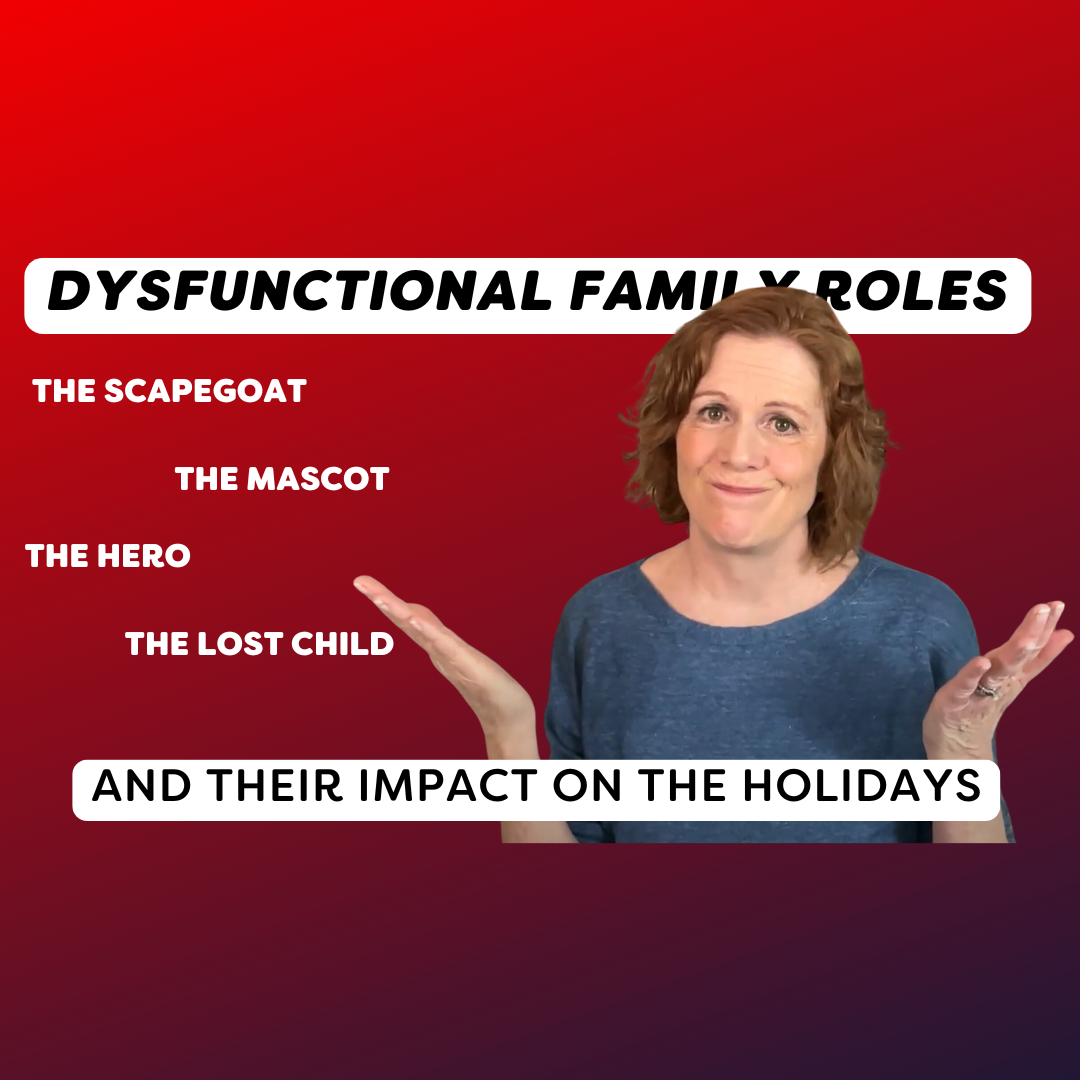
You've left your family of origin, done personal growth work, and become a much more well-rounded person, not just focused on one particular role. You might feel good about yourself. Yet when you come home and go back for the holidays, you react and turn back into those old roles. It's like a time machine because you suddenly feel like you're back responding the way you would've responded when you were younger. You pick an age—10 years old, 12, 15, 18, whatever age you became frozen in—and you think, "How could I be acting this way?" I'll give you a quick rundown of how these family roles typically present during family events and holidays. The Hero Child or Caretaker The hero child or the caretaker child might be the one cooking all the food, cleaning up all the food, maybe even having arranged the events, maybe even arranging how other family members might get there. You probably make sure you're buying gifts for everybody. You might even buy gifts for that relative who never buys gifts for other people so that person has gifts to give others. You might just be doing everything for everybody because that's always been your role within your family system. And what does it lead to? It leads to exhaustion, irritability, resentment, stress, and even loneliness because even with all of this effort, you're not getting the feeling you're looking for. You're not getting that return on effort you've put in. That resentment you feel is toxic for you. Resentment is like taking a poison but hoping it hurts the other person. It's a toxic emotion to feel, and resentment often tells us we are doing too much. A suggestion if that was your role is to just pull back a little, let things not be perfect, let things slide. The Scapegoat You might create a vacuum if you're letting things slide, but that's okay. Let's move on to the scapegoat. You grew up being blamed for everything and it still seems to be happening. Maybe you're still reacting in the same way where you might sabotage things, get angry, or probably dread going to the holidays because you just know you're going to be criticized by everybody about everything. Anything that goes wrong will be blamed on you. You'll probably be resented by the hero child I just spoke about. Even if you've stepped out of this role in other areas of your life, you still might act out or do something that justifies some of their blame or criticism. That's a miserable place to be. This can also be a lonely place to be. You feel hurt. Nobody seems to understand or acknowledge that. This is also exhausting. And you probably end up being a version of the hero child. You haven't recognized what you have done. The Lost Child Then there's the lost child. Lost children often skip out on holiday events because it's likely they live across the world, right? They might pick a place very far away. In general, lost children hate the conflict, can't stand the arguing, don't want to be part of it. They don't assert their own needs because that creates conflict. If they try to avoid anything that creates conflict, they might just skip the holidays altogether. The Mascot or Class Clown Or if you're the mascot, you are expected to tell jokes, keep everybody cheerful. It doesn't matter how you're really feeling inside—you need to make those jokes. You need to cheer everybody up. You need to provide some entertainment and distraction from any real problems that are going on. And that's also exhausting. And you probably end up feeling hurt because nobody's really engaging with you and maybe even resentful that the other family members can't just relax and have a good time. Breaking Free From Old Patterns So these are just snapshots of how these roles might show up during the holidays. I want you to know that you can step out of your role. You can create new patterns, but it takes awareness and it takes effort. First, become aware of what your role was and how it's showing up now. Second, decide what you want to do differently. And third, practice it. It's going to feel uncomfortable at first because you're breaking a lifelong pattern, but it does get easier. I have several resources that might help you with this. I have a free PDF on transforming negative core beliefs, which often develop from these childhood roles. I also have videos on setting boundaries, emotional regulation, and breaking family patterns. If you found this helpful, please like and subscribe. Let me know in the comments which role you identify with most and how it shows up for you during the holidays. I'll see you next week.
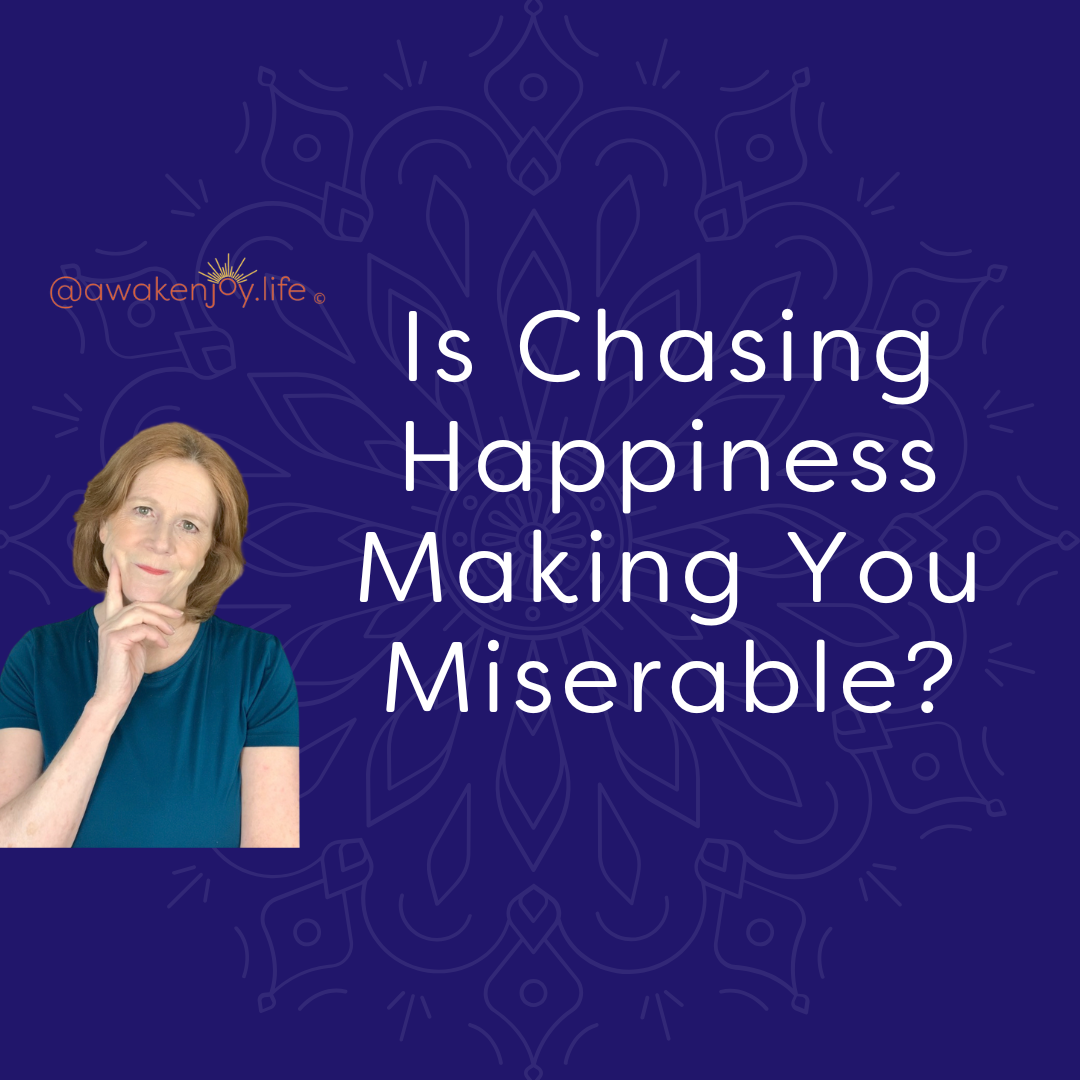
Chasing happiness can actually backfire. I know this sounds completely backwards, but there is actually a fair amount of science and research that backs up this paradox. In this article, I'm going to talk about why this happens and what you can learn from it. And of course, the really big question is: what should we all be doing instead? The Philosophy Behind the Paradox Over 150 years ago, the philosopher John Stuart Mill observed that the people who were happy were those who were focused on something else, not specifically on their own happiness. Yet we live in a society that pretty much tells us that we should always be trying to be happy, we should always be trying to improve our happiness. The pursuit of happiness is actually written into the US Declaration of Independence. The Science of the Happiness Paradox Some of the seminal research on this topic was actually done over 20 years ago at the University of California at Santa Barbara when Jonathan Schooler put out a research report, which he called "The Pursuit and Assessment of Happiness Can Be Self-Defeating." Since then, there has been a lot of research that has supported this point. In 2011, Iris Mauss, a psychologist and professor at UC Berkeley did a study analyzing whether the people who really valued being happy were actually happier than others or less happy. For the research, they gathered a group of women and had them do a self-report questionnaire where they ranked their life satisfaction, depressive symptoms, and overall feelings of wellbeing. They also asked the participants to report their current stress level, and whether there were big stressful events that had recently happened in their lives. What they found was that of the women who were experiencing a low level of stress, the ones who valued happiness more were actually less happy. But in the group of people who were experiencing a high degree of stress, there was no difference in happiness level between those who really valued happiness and those who didn't. It's interesting that the pursuit of happiness really seems to backfire when life is the best, when stress levels are low. I think this is because we get that feeling of "I should be happy, I'm not happy, but I should be because I have all this stuff, or all these things are going well, so I should be really happy." When we're under a lot of stress or things are really difficult in our lives, we don't put that pressure on ourselves. Let me know if that makes sense to you, but it definitely makes sense to me. Iris and her research team decided to follow up with another study because the first showed correlation between valuing happiness, stress levels, and happiness—but not causation. It didn't show that people were less happy because they valued happiness more. They designed a study with two groups. One group read an article about how important happiness was. The other group read a neutral article. Then they showed some participants from each group a happy movie and others a sad movie. For those watching the sad movie, there was no significant difference in how they felt. But there was a substantial difference in those watching the happy movie. The ones who had been primed to value happiness—who read about how important it was—reported being less happy than the group who read a neutral article and watched the same happy movie. These research findings have been followed up with numerous other studies showing similar results. What This Means for You But the important question is - what does this mean for you? It's a hard thing to stop valuing happiness... because... we all want to be happy! We are so conditioned to think, "What do I need to do to feel happier? Why don't I feel happier now? What would make me feel happier? Given everything that's good, I should be happier." This leads to all that self-criticism I've talked often about on this channel, and it makes us feel bad about ourselves. So what can we take away from this? Why the Happiness Paradox Happens Researchers who study this have identified two main explanations. One I'm going to call the "high bar and disappointment" angle, and the other is the "constant monitoring" angle. The High Bar and Disappointment Angle If you value happiness highly, you can create a very high bar of what that means. In reality, we all experience conflictual feelings most of the time. Those moments where we are purely happy are rare and not sustainable. But if we think we should be purely happy with no caveats, then we're likely to be disappointed. I was a psychotherapist for 20 years, and I found in working with people—and I've experienced it myself—that disappointment is one of those emotions we really dislike. It's not talked about as much as grief or anger, but I think disappointment is one of the most difficult emotions. I would sometimes be amazed at the degree to which people would try to avoid disappointment because they hated it so much. With this happiness paradox, if you're always setting the bar high and then you're disappointed all the time, that's a horrible feeling. Obviously, it cycles in on itself. It's been hard for me to read this research without thinking about my grandmother. Her parents were immigrants who did not speak much English. Until my grandmother was five, she spoke their language and she went to school not knowing any English. She did not have an easy childhood. Her parents were quite poor, and I think she had the view that life was going to be hard. By the time I knew her, she was moving into retirement and things were easing. I remember how she would have so much joy and happiness at the simplest things: picking blueberries, having a dessert, dancing. There's an element where it feels a little sad. I would have wanted her to expect more. I felt like she deserved more. But she was quite happy and didn't have any sense of being entitled to an easy life or happiness. I do try to channel her every now and then. The Monitoring Problem The monitoring problem is when we constantly ask ourselves, "Am I happy now? Why aren't I happy? How happy am I? What is it I'm feeling?" We're always monitoring our emotional state. Obviously some degree of this is needed. But we're talking about balance. If this is something you do frequently, it's worth knowing that constant self-monitoring has been tied to increased depressive symptoms. Five Practical Strategies to Stop Chasing Happiness I am going to focus on five things that you can begin to put in place to help you shift away from that prioritizing of happiness and towards something that maybe will surprise you with happiness. #1: Accept All of Your Feelings, Including Your Negative Feelings Part of the problem is that we try to push away those negative feelings. We don't like to feel anger or guilt or sadness, and we go to a lot of effort to push them away. It doesn't work. I know this is very hard and it's very complicated. I do have a lot of videos and blogs on emotional intelligence and emotional regulation. But the main point is to stop focusing on some kind of unattainable ideal. We are almost always going to have a mix of feelings, and sometimes good enough is good enough. Acknowledging and letting yourself feel what you actually feel can actually be really helpful. Not doing this leads us to a lot of guilt and negative self-talk, which is my point number two. #2: Let Go of the Self-Criticism There's an element in a lot of online content which says, "If you're doing it right, if you put your energies in the right way, in the right area, you're happy." I believe this content contributes to how badly we feel when we aren't happy. Sometimes it is true that if you approach things in the "right way" we are happier. But not always. We don't have control over everything, and human life can be hard. I also have videos that go into stopping the negative self-talk and changing these things. I know it needs a lot of work, and I do have an online program called Roadmap to Joy. In that program—and even if you're not interested in the program, bear with me because I think you'll understand the point I'm making—I really focus on the feeling of joy, not happiness. I think joy is about those little tiny moments, usually moments when we're mindfully present, usually moments that are pretty simple like the ones I mentioned that would bring my grandmother joy. It's really those small things. It's not always the big goals. I also have a free webinar called " Rewire Your Brain for Joy and Confidence ." In this webinar, I go into some of the scientific research on how we can actually change the focus of our brain away from things that are either problems or triggers and move towards more mindfulness and more joy. That webinar has a lot of practical tools as well. #3: Focus on the Activity You're Doing, Not the Feeling You're Having This recommendation comes from a lot of research. In particular, when you are engaging in activities, be focused solely on that activity. This is particularly true for the ones you get to choose. An example that comes to mind for me is skiing (I love to ski). When you're skiing, you can think of nothing else. You can't really spend time assessing, "Am I happy? Am I not happy?" (Although sometimes if you're cold you might be focused on that and 'why AM I doing this now?!'...) but basically you have to be really hyper-focused on what you're doing. It's incredibly relaxing to have my mind and my body focused at the same moment on the same thing. I think people who engage in music or art feel the same way. #4: Prioritize Positivity, Not Happiness I want to bring in a caveat with this, but first let's talk about prioritizing positivity. This would mean asking, "How can I look at this in a positive way?" Practices like gratitude have been shown overall to help improve well-being. There are some mindfulness practices that help with this: taking extra time to breath in the sight and smell of a beautiful flower for example. Taking the time to enrich our experience of the positive involves mindfully putting your focus on something positive with all your senses: hearing, sight, smell, touch, taste. Now, my caveat here is that false positivity is not helpful. If trying to be positive just ends up making you feel more guilty because you really can't do it, or more frustrated, skip this one. Maybe there are little small ways to build it in—the smell of a cup of tea—but not forcing yourself to change how you think. That's why I said there's a caveat for me on the issue of prioritizing positivity, although research does show that this helps people overall feel more wellbeing. #5: Focus on Things That Bring You Meaning and Purpose Rather Than Happiness Purpose doesn't have to be some big huge purpose. It doesn't have to be an enormous goal. Your purpose could be taking good care of your pet. Your purpose could be being there when your grandchildren call. Or your purpose could be learning more about poetry. Engaging in activities that give you meaning and pursuing goals for that type of satisfaction can sometimes surprise you with more contentment. The Bottom Line The science directly contradicts our culture's obsession with happiness. Constantly engineering your life for peak positive emotion is a fundamentally flawed strategy. To end today, I want to share the full quote from John Stuart Mill as it ties into a lot of what we've been saying here: "Those only are happy who have their minds fixed on some object other than their own happiness—on the happiness of others, on the improvement of mankind, even on some art or pursuit, followed not as a means, but as itself an ideal end. Aiming thus at something else, they find happiness by the way."
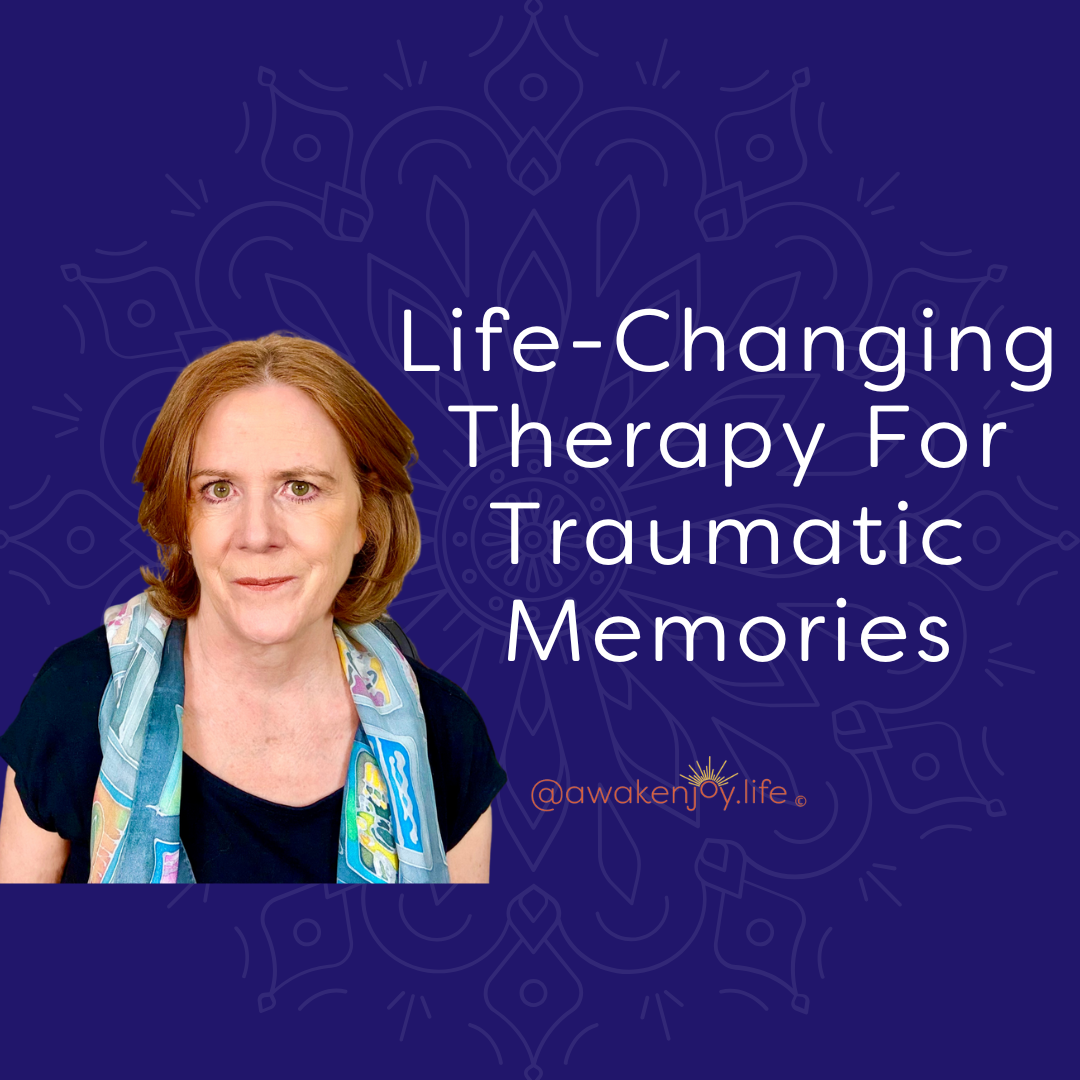
Why Traumatic Memories Are Different—And How EMDR Actually Changes Your Brain Traumatic memories stay live, present, and intrusive until we process them. It is not just that they feel different—it is how they are stored in your brain. Today I want to explain what a traumatic memory is, how traumatic memory processing works, and how it helps turn that memory into more of a normal memory where you are not re-experiencing it. And I know that most people who have trauma memories want to get rid of them entirely. They ask, "Can you erase this from my brain?" That is not possible. But when you process the memory and it no longer brings up all the physiological and emotional symptoms, when it is not reinforcing the negative core belief that developed during the trauma—it is incredibly freeing. Most people I worked with, once they completed processing their memories, would say, "Wow, I can think about it now, and while I know it happened and I am not happy about it, it feels totally different. It feels like it is in the past. It feels like more of a story. I am not re-experiencing it and I am not feeling continually triggered by it and it is no longer intrusive." Those are major wins . Characteristics of Traumatic Memories Let me quickly outline the characteristics of a traumatic memory. Sensory Information Dominates Traumatic recall is dominated by sensory information—sounds, smells, feelings. The sensory details are stronger than any kind of storyline. Fragmented Rather Than Narrative You might remember one piece or very intensely remember a sound or smell, but not remember what happened right before or right after the event. The memory is in fragments and flashes. Time Distortion Traumatic memories feel fresh and current. The sensory details feel like they are happening now. It does not feel like the event happened long ago, and there is no sense of narrative time in the traumatic memory. People comment on this constantly: "Why do I feel this so intensely when it happened 40 years ago?" This makes them feel like they are losing their minds. But it is all about how the memory is stored. Connected to the Physiological Feelings From the Time of the Event Another characteristic is that traumatic memories come with the physiological feelings that happened at the time. If you froze, you might freeze when you remember it. If you fought or fled or wanted to flee, you will have those same feelings when that memory surfaces. And then, when you have these memories with that flood of physiological symptoms and emotions, it can reinforce those neural pathways. This is also why sometimes jumping into processing traumatic memories—if you have not done the required prep—can be overwhelming. For EMDR in particular, there is substantial preparation before you begin to process traumatic memories. If you are trying to work with them on your own and you have not developed tools and skills to physiologically relax, it can be overwhelming. Later in the blog post, I'll provide information on how you can navigate this. How Traumatic Memories Are Stored Differently in the Brain Researchers at Yale University and Mount Sinai were able to document that when people were recalling traumatic memories—instead of simply a sad memory—the traumatic memories were not stored in the hippocampus (via fMRI imaging). When they recalled the traumatic memory, that part of the brain did not light up. Whereas when they recalled a sad memory, there was the expected activity in the hippocampus. ( Reference for research : Perl, et al. Neural patterns differentiate traumatic from sad autobiographical memories in PTSD. Nature Neuroscience, November, 2023) The hippocampus is our file organizer for memories. When normal memories are stored, there's activity in the left front part of our brain—where our language centers are and where we think about stories in narrative fashion. Traumatic memories are stored in the right back part of the brain, which produces nonverbal memories and remembers sensory details. This part of the brain is in the limbic system—the part that doesn't have a sense of time. Research has shown that when stress chemicals flood our system, they shut off access to the hippocampus and normal memory storage. Just knowing that your traumatic memories are stored differently in your brain can help increase self-compassion. The trauma had a physical impact on you and your brain, and it is not your fault. Getting over that sense of self-blame and shame is essential to recovery. Neuroplasticity Now, I do not want you to get discouraged hearing that trauma had a physical impact on you, because it is possible to heal and rewire the brain. This is because we have neuroplasticity—our brains are changeable. Neuroplasticity means that a neuron (a brain cell) can be molded through our experiences, thoughts, feelings, behaviors, and habits. I go into a much deeper dive on this in a free webinar I have (** Rewire Your Brain for Joy and Confidence **). Just know that you can change the neurochemistry of your brain. This is what EMDR and other trauma-informed, trauma-focused therapies work toward. How EMDR Processes Traumatic Memories With traumatic memories, you cannot just will them away. You cannot just "get over it." But "processing" traumatic memories can move them from the limbic system where they are stored (with all their intensity and emotion) into your long-term memory storage. This is one of the goals of EMDR therapy. The Importance of Physiological Safety and the Processing Stage Some people feel that when they talk about their trauma, they get re-traumatized. And this can be the case. The most important thing needed so that this does not happen is to integrate the processing of the memory with physiological relaxation and at least some sense of safety. I know a sense of safety is very difficult for many trauma survivors. However, practicing physiological relaxation techniques help you learn to move at least to a place of neutrality where your body can feel like, "I am not in danger this immediate moment"—that is sufficient. EMDR therapists are trained to work with people prior to the active processing stage to make sure they can stay in a zone of tolerance. I talk more about the zone of tolerance in other blogs and videos on emotional regulation, but it means staying within a certain range of emotion—not getting too hyper and not shutting down into a freeze state. Learning emotional regulation skills prior to active processing is important. When you begin to actively process the memory—actively bring it up, talk about it—you notice the very early signals that you are getting too activated or moving into a freeze dissociative state. Then you return to some grounding techniques, diaphragmatic breathing, to a feeling of safety with the therapist you are working with. Once you have lowered your pulse rate and re-centered, you can go back in. **It is the modulation and moving between different physiological states that helps the processing.** You are processing it into more of a story, more of a narrative that happened in the past, and that happens over time. Memory Fragments Come Together WIth EMDR, as the memory becomes a story, it is less fragmented. It has less of a physiological impact. When I worked with people using EMDR, it would often surprise me how different pieces would begin to fill in the memory, and often how the focus of the memory could shift. Here is an example of a client who was in a serious car accident. Now, I avoid using detailed examples of trauma in my posts because they can be very triggering for people. If you are particularly sensitive to car accidents, you can skip this section. This client initially remembered flashes, smells, sounds, lights, but not much about what happened immediately before or after the accident. As it was processed, they began to fill other details about the accident and about what happened prior to the accident. Toward the end of the processing, they remembered what happened after—the fact that the EMS team showed up and that they received the help they needed. This portion of the memory became a very important part of the memory for them. Prior to the processing, the feeling of "I'm in danger" had surfaced every time they had the memory. This belief gradually changed into "I can find the support I need." The memory changed from a fragmented, sensory memory into a narrative memory. It no longer flooded them with the sights, sounds, and smells of the accident. The client was able to move to a physical understanding that the event happened awhile ago and that they were physically safe sitting in my office, a feeling of being okay. Processing Negative Core Beliefs The other thing that gets processed with EMDR are the negative core beliefs that go with trauma. All traumas change some element of self-concept. EMDR therapists are trained in helping you identify these negative core beliefs and finding a "good enough" positive belief that can be strengthened. A feeling of "I'm in danger" (in a car accident, for example) can move to a feeling of "I can find the support I need." Bilateral Stimulation Another thing that makes EMDR unique is the bilateral stimulation of the brain. This is often done with eye movements, but can also be with sounds that alternate between the left and right ear, or tappers that alternate a pressure in opposing palms. This external stimulation of both parts of the brain helps facilitate having the whole brain involved in thinking about the trauma, not just the fear center of the brain. For processing trauma, you want to make sure your whole brain is online, which is connected to that physiological relaxation. When you are relaxed, your whole brain is online. When you are in fight, flight, freeze mode, it is your limbic system, your amygdala taking over. When Professional Help Is Not Accessible I know that not everybody has access to an EMDR therapist or a trauma-informed therapist. If you are in that situation, I encourage learning the emotional regulation tools. There is also an online Virtual EMDR software program that assists you in self-administered EMDR (Click here for information. If you decide to move forward, put this code into the promo box on checkout for 20% off: AWAKENJOY20. Self-administered EMDR is not for everyone ( here's a video on that topic ). However, I have talked to many people who have benefited from the VIRTUALEMDR Software. (I am an affiliate, which means this channel/blog receives some support if you sign up through this link) Moving Forward with Hope You cannot will your traumatic memories away. Avoiding them and avoiding the things that trigger them does not help in the long run. I hope you know that **healing is possible.** Processing your traumatic memories can move them into long-term memory storage where they will feel like they happened long ago in the past and you are not re-experiencing them. This also means that the sights, sounds, and situations that may have triggered you into a PTSD reaction will not trigger you. While you might want to erase the memory completely, moving it into long-term storage is a major win. I hope this was helpful! I wish you health and healing. See you next week. Reference for research: Perl, et al. Neural patterns differentiate traumatic from sad autobiographical memories in PTSD. Nature Neuroscience, November, 2023
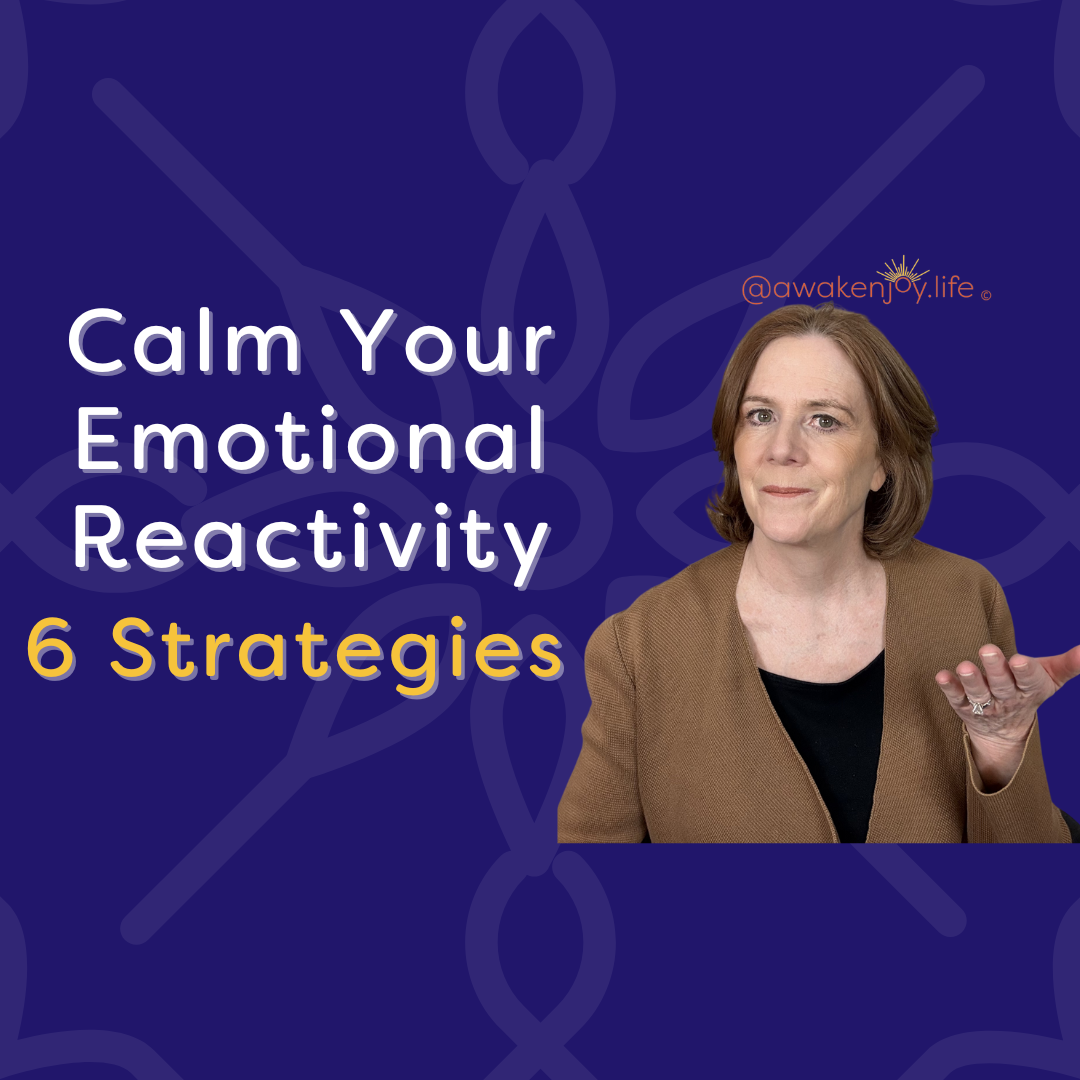
How to Stop Reacting and Start Responding When you get reactive, what happens? Do you: Lash out in anger? Automatically say yes when you mean no? Shut down in the middle of a conversation Run away? We all have our habitual mode of reactivity, but what these reactions have in common is that they're not conscious choices and they usually lead to negative consequences. Today's blog explains how calming down reactivity is the most important skill for regulating emotions. By the end of this article, you'll understand what reactivity is and where yours came from. You'll understand that power lies in the space—the space between an event and our reaction or the space between our emotion and our response. And I'm going to share six strategies for expanding that space, allowing you to choose how to respond instead of defaulting to automatic reactive behavior. Understanding Reactivity: It's Not Your Personality Most of us live far more reactively than we realize. We have automatic behaviors that kick in, and we repeat them over and over to the point where we say, "Well, that's who I am. That's my personality." But when you understand the origin of reactivity, you'll probably shift that belief. Our reactive pattern comes from our fight, flight, and freeze survival mechanism—a primitive survival mechanism. If we grow up in a dysfunctional family or with significant trauma or stress (including neglect), we develop patterns very young that help us survive. When they become so ingrained that we repeat them over and over later in life, they prove ineffective. For example, if you have a parent who rages, you might learn to freeze or flee. Then later in life, any time there's conflict, you either freeze or flee. A different child in that same family might be the one who fights with the rageful parent. They grow up feeling that in order to survive, they have to fight with that parent, so they become the fighter. Then later in life, whenever there's conflict or stress, they fight. The Four Reactive Patterns There are four reactive patterns. Three are the ones mentioned above that you are probably familiar with: fight, flight, and freeze. The fourth is the fawn response, which is when someone immediately engages in people-pleasing behavior or diminishes themselves to accommodate another. This response also comes from trauma. Someone who fawns automatically moves into a position of appeasing the other. As a child, this might have been necessary for survival, and then it becomes deeply ingrained—so ingrained it feels like part of your personality. Later in life you find yourself doing it constantly, even when it's unnecessary. The Costs of Chronic Reactivity Chronic reactivity comes with serious costs: 1. You often feel out of control and ashamed. You know that these reactions don't lead to the outcome you want. This brings up significant shame and guilt. 2. Reactivity causes damage to relationships. If you're a fighter, this is obvious. But it damages relationships if you're a fleer as well. If you're a freezer, people often feel shut out. If you fawn, people feel like they don't know where you stand and can't be close to you. All four reactive patterns impact our relationships. 3. You aren't making decisions aligned with your values and long-term goals. 4. You're reinforcing the neural pathways each time you engage in these behaviors. The Power of the Space Between The Event and The Response One of the greatest quotes on this topic comes from Viktor Frankl: "Between stimulus and response, there is a space. In that space is our power to choose our response. In our response lies our growth and our freedom." Viktor Frankl was a psychiatrist and neurologist who survived the Nazi concentration camps. He wrote an incredible book I highly recommend called Man's Search for Meaning . He founded a school of thought within psychology and psychiatry based on the premise that man's search for meaning is the most powerful motivational force in our lives. You are not your automatic reactions. You have the capacity to choose. We're going to talk about strengthening that capacity to choose and expanding your ability to access that space between the stimulus and the response. Six Strategies for Expanding the Space Strategy #1: Awarenes s of your habitual pattern and awareness of when you initially get triggered. Know what situations, people, or emotional events trigger your reactivity. Learn to recognize the signs. Some signs could be physical: your face getting hot or your pulse rate increasing. Some might be behavioral: you might have a nervous habit or something you say when you are nervous that you don't mean. Some signs might be cognitive: your mind goes blank if you're a freezer. The quicker you recognize the signs, the quicker you can adjust and slow your reactivity. One exercise to expond your awareness is to keep a journal for a week or two. Note at the end of each day: Did I get reactive today? What was the situation? What did I do? When did I realize I was being reactive? As you pay attention and think it through, I guarantee your awareness will begin earlier and earlier. Strategy #2: Stop, Take Five, and Think The second you realize that something reactive is happening within you: Stop, take five deep breaths and think. You don't have to respond right away. You don't have to answer someone immediately. If you're a fleer, you don't have to run away right away. Stay grounded, take five. That "take five" can vary. Sometimes it's just five breaths in the moment. Sometimes you might need five minutes. With bigger issues, you might need five hours—you might need time to process what's going on. Strategy #3: Reset Your Physiology Regularly practice the things that help you calm your physiology in the moment. I guarantee that when you get reactive, your pulse rate jumps, your breathing becomes more shallow, and your muscles become more tense. You may or may not be aware of those different physical signals, but as you think this through, you'll become more aware. The best tools for physiologically relaxing are grounding tools and diaphragmatic breathing tools. You take them everywhere you go, they're free and they're accessible. However, you need to practice them when you're not reactive in order to be able to access them when you are. I often recommend people practice one of these tools (whichever one is easier or more accessible) for minutes at a time, a few times a day. This gives you greater ability to access that tool when you are activated. There are other tools that work for people: playing with your pet, taking them for a walk, being out in nature. Those things may not always be accessible, so it's good to have the other tools as well. Know what tools work for you. Strategy #4: Mindfulness and Meditation I know these are hard for many people, but these are the tools that will give you the greatest ability to pause—to access that space between something upsetting and your response. I talk more about this in a free webinar I have called Rewire Your Brain for Joy and Confidence . It's about an hour and 15 minutes and definitely worth it. I hear from many people that they learn a tremendous amount. It's about rewiring the neural pathways that have developed over a long period of time and lead to your reactive behavior. Strategy #5: Cognitive Reappraisal This is about thinking about the situation differently. This is not an early step in this process because with reactivity, you must first access some physiological calming so your amygdala calms down. This enables you to bring your frontal lobe online, so you can begin to think about the situation and have the capacity to change how you are thinking about it. This is a much bigger topic than I can address fully today, but I have several videos and blogs on cognitive distortions, and this blog also discusses it: Skills for Emotional Regulation . Example 1: Let's say you are highly sensitive to criticism and you become very reactive when criticized. When your boss criticizes you, your brain might jump into "I could lose my job" or "I hate my boss, but I'm trapped and can't get out of this." At the same time, your body is reacting as if you're in physical danger. There are several different ways of seeing the situation that are probably more accurate: • Your boss is kind of a jerk. He doesn't deliver criticism well, and it impacts everyone. It is unpleasant, but you are not in physical danger, and the catastrophizing is not needed. If you want to find a different boss and a different job, you can calm down and plan accordingly. • Or let's say your boss is generally reasonable and you know you are overreacting. You can reassure yourself that you're not in physical danger, and reassure yourself that it is ok to make mistakes. Everybody makes mistakes, which is true. Bosses usually offer criticism because they care about the employee and want to help them improve. If you look at it as a tool for learning—with a feeling of "I'm ok as I am, I just need to learn some things differently" you will be able to calm down and take productive action. Example 2: A friend doesn't text you back and you immediately get worried you might have done something wrong. You review your last conversations, going over and over them. Your thoughts escalate about how made the person is, or that they will disappear. If you are able to identify that this way of thinking is a habitual pattern from your past, you can stand back from your reactivity and assess it. Bringing in cognitive reappraisal and recognizing the pattern, will help you shift your thinking to, "She's probably just busy. I can try her again tomorrow." Strategy #6: Value-Based Decision Making Once you've calmed down and created space, you can think through what response to the difficult situation best reflects your values and your goals in life. Ask yourself: • What response would be most aligned with my values and my long-term goals? • What response helps achieve what I want to achieve? • What response will make me feel good about my handling of the situation no matter what the outcome is? Knowing our values is a North Star for us. It relates to the concept that the search for meaning is vital. In the Roadmap program I have ( Roadmap to Joy and Authentic Confidence ), the first module is on identifying your values. Which ones do are truly yours versus the ones you were told to have by family or society? What are the most important ones? This self-exploration helps guide your decisions throughout life . Remember to Practice the Tools and Have Self-Compassion, and Freedom Practice makes progress—all of this takes practice and time. Have self-compassion. Know where your reactivity came from and that it made sense to develop this pattern. The freedom is in the response you choose, not in the automatic reaction. You can still feel anger, and yet not act out in anger . You can feel anger, and choose your response. You can still get your feelings hurt, and yet not act out with your habitual pattern. All of us will have our feelings hurt, something will make us angry, things will happen that make us sad. All of this is going to happen. I know it can be very tempting to listen to those people who say, "If you do everything right, life is perfect." But that simply isn't true. Knowing your emotions, knowing yourself, and being able to choose your response—that's a wonderful thing. If you found value in this blog, please share it with someone else you might benefit! I appreciate you, and I'll see you next week.
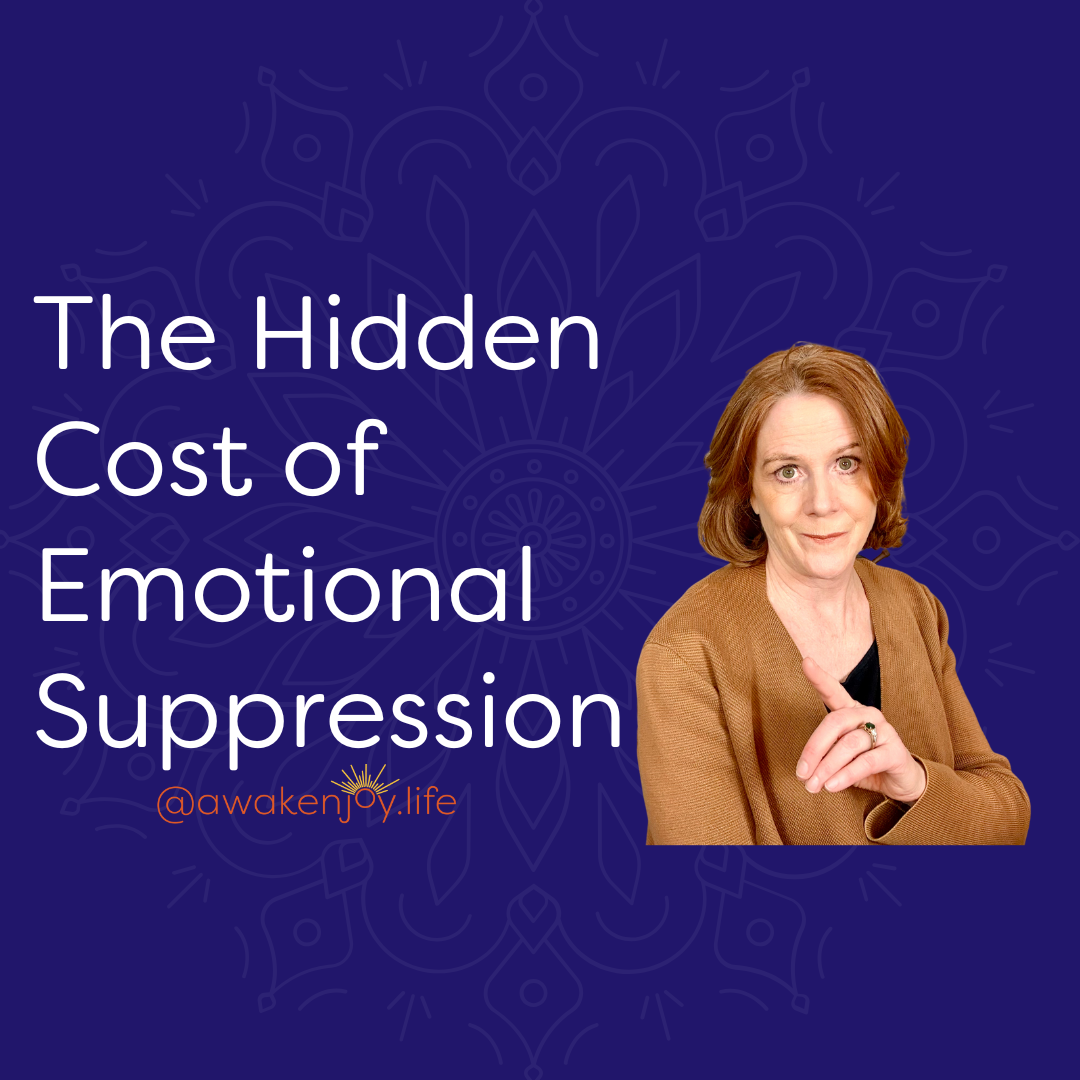
Do you tend to stuff your feelings down, pushing away emotions like fear, sadness, and anger? This is called emotional suppression and while it is common, it comes with significant hidden costs. Suppressing emotions has been shown to increase your stress response, impact memory and negatively impact relationships

